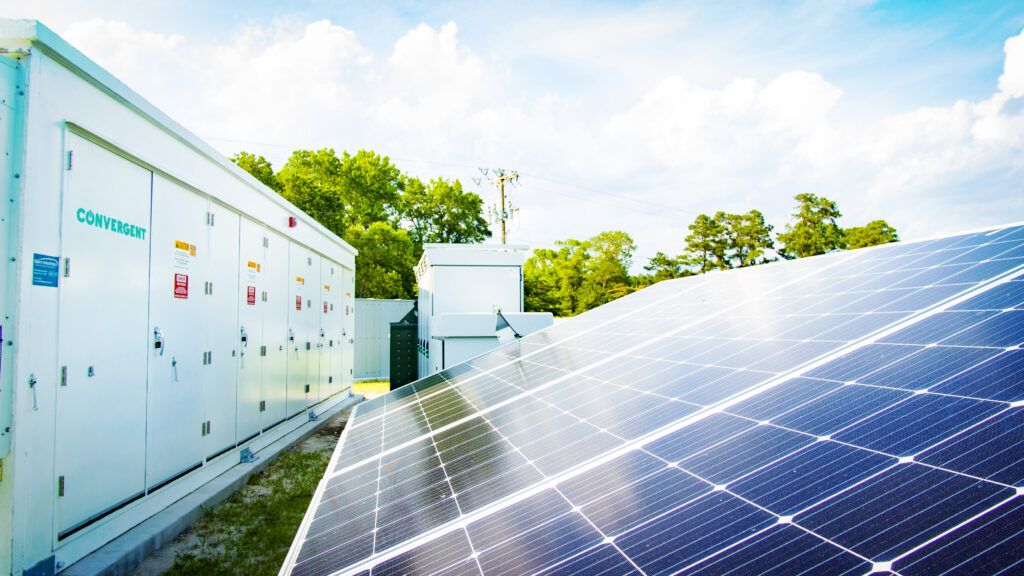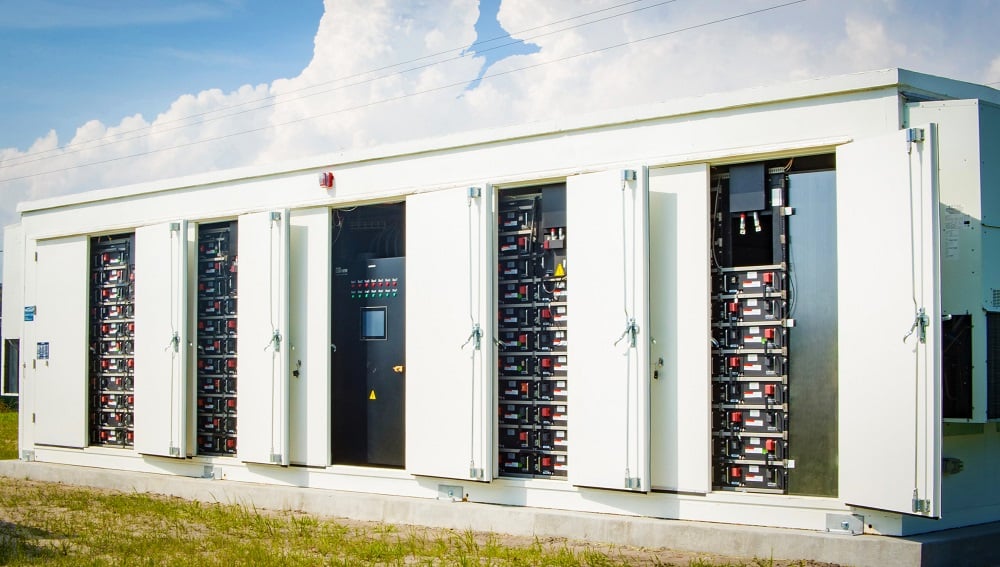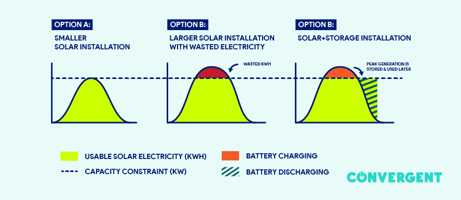Six Benefits of Energy Storage to the Clean Energy Transition

We know that widespread access to energy storage is paramount to the clean energy transition.
Solar panels and wind turbines only generate electricity when the sun is shining or the wind is blowing. Humans, of course, do not only use electricity when those conditions are met. This is why finding a way to reliably store and access those electrons (i.e. energy storage) is key to the clean energy transition.
But ensuring a smooth transition for electricity providers and customers is not the only benefit of energy storage! Front-of-the-meter (FTM) battery storage installations enable utilities to reduce peak demand, lower costs, and improve grid resiliency.
Unpacking the “Clean Energy Transition”
As global institutions rush to address the profound and growing impact of the climate crisis, the “clean energy transition” has quickly become one of the media’s favorite phrases. However, the clean energy transition goes beyond nomenclature; it is a complex social and industrial process that requires abandoning outdated, fossil-fuel dependent energy infrastructure and replacing it with new, clean, and dependable technologies. The clean energy transition requires an increasing awareness of energy storage and its multiple benefits to the grid, to utilities, and to their customers.
Why Energy Storage is the Linchpin to the Clean Energy Transition
To maximize the value of renewable generation and distributed energy resources, electricity providers must also be able to store electricity when it is abundant, or there is a surplus, and dispatch it to meet fluctuating demand (particularly at moments of highest demand). Once the balance is hit between the renewable energy supply and intelligent energy dispatch, the gains will be tremendous.
Right now, when we talk about energy storage we are most often talking about battery storage.
Here are six distinct ways that electricity providers benefit from leveraging battery energy storage systems:
- Reducing Peak Demand and Carbon Emissions: To meet the electric grid’s highest periods of consumption, also known as “peak demand,” utilities often rely on natural gas peaker plants, which can quickly ramp up production to meet the needs of the grid. Those plants, however, are expensive, inefficient, and carbon-intensive. Battery storage assets, on the other hand, produce zero on-site greenhouse gas emissions and may be deployed to augment peaking capacity or replace the need for peaking generation entirely!
- Reducing Local System Demand: Energy storage projects will not only help to meet greenhouse gas emissions goals but will also help to reduce local system demand. Battery storage typically charges during off-peak times using clean energy and discharges during peak times, thus replacing fossil fuel generation. In this way, battery storage can defer the construction of new peaker plants, expedite the retirement of existing fossil generation, and avoid costly transmission and distribution system upgrades. New York and Massachusetts have both established “Clean Peak” and “Time-of-Use” standards for this purpose, developing a market for renewable energy players to accelerate the pace of renewables and energy storage deployment.
- Integrating Intermittent Resources: The accelerated adoption of clean energy and electric vehicles will continue to put increasing pressure on the grid and change daily load patterns. Energy storage is instrumental in integrating clean energy by creating a flexible grid that can better handle the intermittency of renewables and allow for the time-shifting of clean energy to address changing demand peaks (i.e. times of greatest demand for electricity).
- Increasing Environmental Equity: Individuals residing in low-income communities are disproportionately impacted by pollution from fossil fuels and have not equally benefited from the lower costs of renewable energy. Energy storage produces zero on-site emissions and can be deployed in tandem with community solar initiatives to reduce pollution levels and electricity costs while increasing electricity access.
- Lowering Costs for Utilities and Ratepayers: Energy storage can add capacity. Providing diverse services to utilities can both lower costs and create new revenue streams. Ultimately, utilities will be able to pass on savings to their customers (members or ratepayers) in the form of lower electricity bills. These services include peak shaving (coincident and non-coincident), frequency regulation, voltage support, demand response, system resiliency, and emergency power during critical outages, among others. Energy storage is also an instrumental tool in the Non-Wires Alternative (“NWA”) toolkit – a category of projects that includes energy storage, DERs, energy efficiency, and demand response – that aim to defer or eliminate the need for traditional, costly, transmission and distribution infrastructure upgrades. In other words, because energy storage allows utilities to defer or eliminate the need for infrastructure upgrades, those costs are also deferred or eliminated, benefitting both the utilities and their customers. The features of battery storage, which include a small footprint, quiet and pollution-free operations, instantaneous response, and the ability to provide added capacity during grid peaks, make it an ideal solution for utilities.
- Enhancing Grid Resiliency and Power Quality: Energy storage also provides benefits to the electric grid more broadly by improving the resiliency of distribution systems and improving power quality by enhancing voltage support.
Don’t fall Behind. Energy Storage Adds Value Today!
We all benefit from the widespread adoption of energy storage. Spurred on by falling costs and the latest, proven technologies, strategic-minded investor-owned utilities, municipalities, and electric cooperatives across the United States are already leveraging battery storage solutions to lower wholesale demand and energy costs, increase reliability, and integrate renewable energy assets.
With over a decade of expertise, Convergent has 250 MW /500 MWh of energy storage-led assets operating or under development.
If you have not yet explored the benefits of energy storage to your network, or are evaluating whether to own or contract out for an energy storage asset, Convergent can help you evaluate your options.
We are ready to supercharge your position in the clean energy transition. Contact us today to learn more.

Surina Diddi is responsible for the economic and financial evaluation of potential growth opportunities, market analysis, real-time asset operations, and aspects of the investment pipeline.




